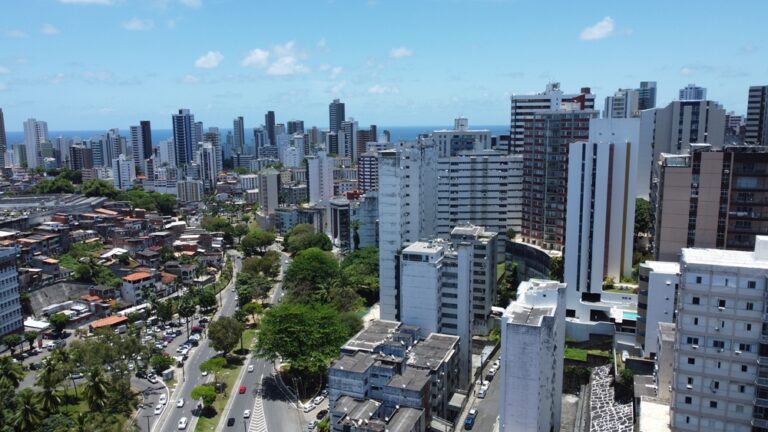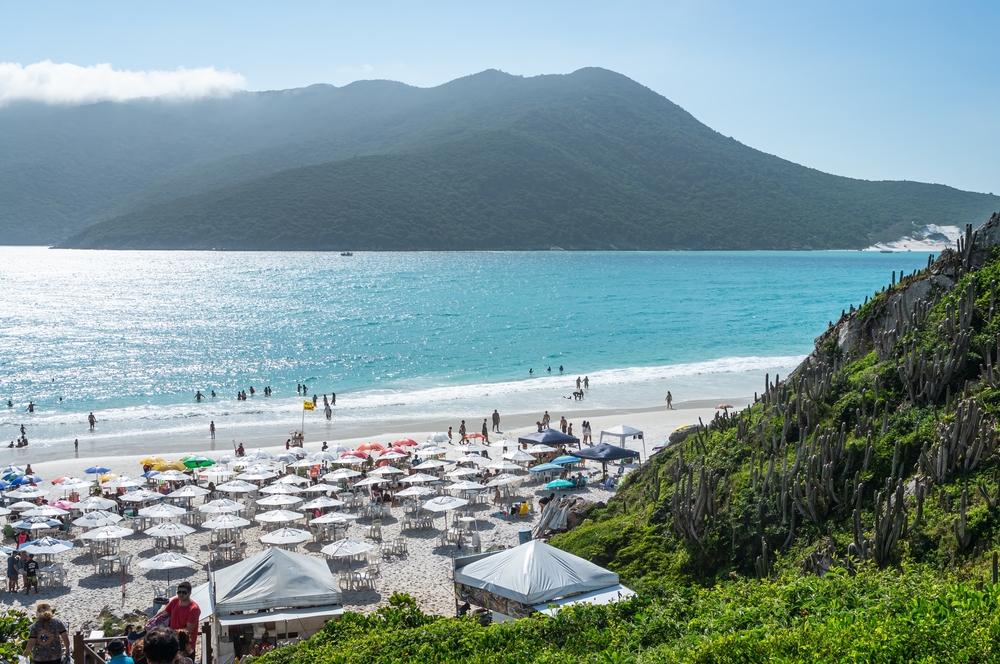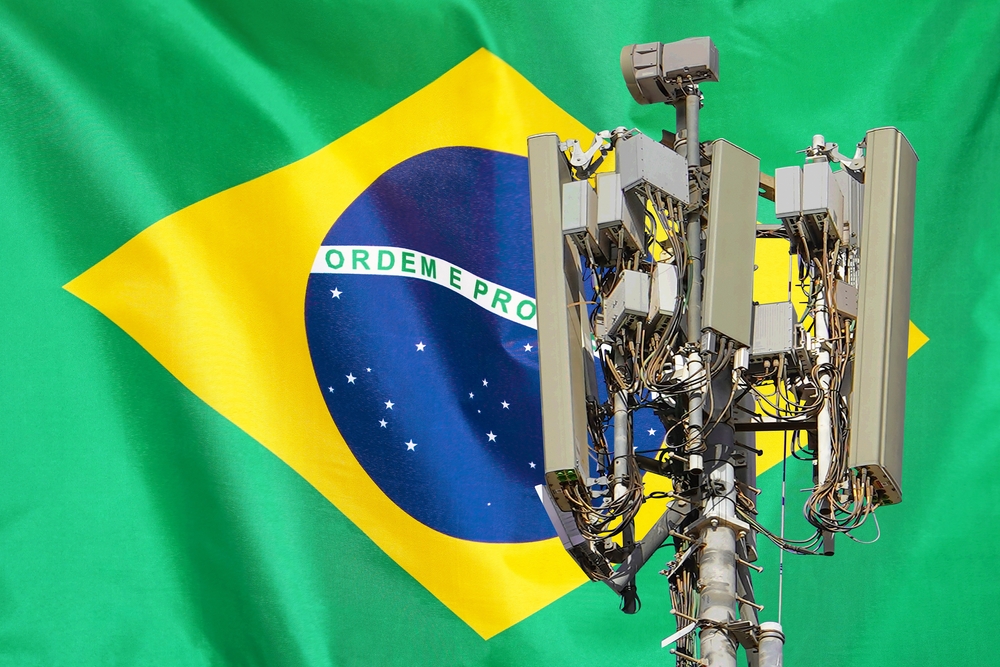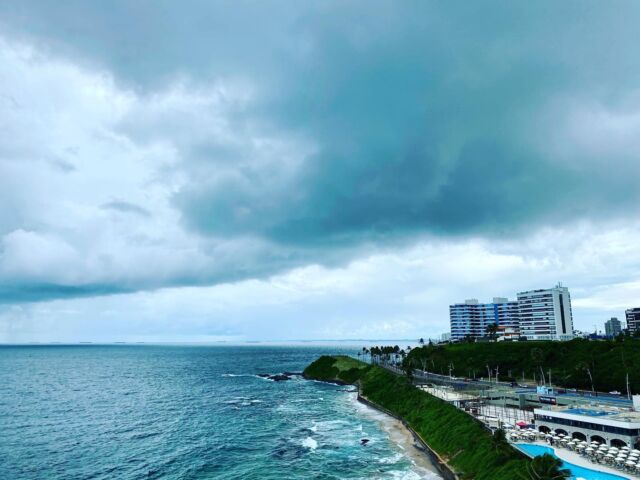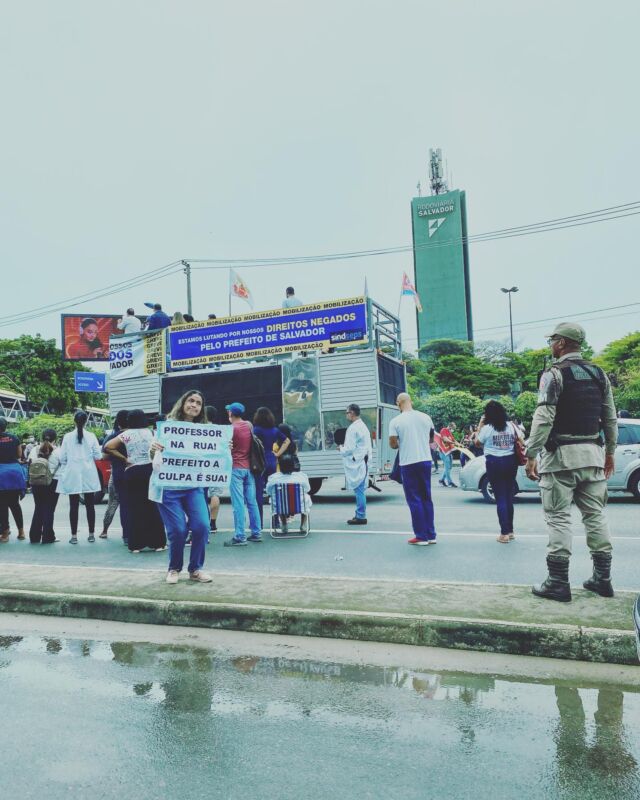Table of Content
ToggleIntroduction
Trade wars can reshape global commerce in unexpected ways. As tensions rise between major powers, Brazil finds itself in a unique position to benefit from shifting trade patterns. The recent escalation of tariffs between the United States and China has created new opportunities for Brazilian exporters, particularly in the agricultural sector.
Brazilian agriculture is seeing significant advantages from the ongoing trade war, with the country emerging as “a secure supplier for customers who demand food,” according to Aurelio Pavinato, a representative from grain company SLC Agricola. During Trump’s previous term, Chinese buyers shifted purchases away from American farmers to Brazilian producers, a pattern that appears to be repeating as new tariff threats emerge.
While Brazil’s Foreign Minister Alexandre Padilha has stated that Brazil won’t retaliate against the United States’ 25% tariffs on steel and aluminum, the country is preparing for increased Chinese demand for its products. This strategic positioning could lead to higher food prices globally but create substantial export opportunities for Brazilian businesses across multiple sectors.
Key Takeaways
- Trade tensions between major economies create export opportunities for Brazil, especially in agricultural products to China.
- Brazil’s position as a neutral supplier strengthens its role in global trade during periods of international economic conflict.
- Higher tariffs on Chinese goods by the United States could open new markets for Brazilian exports across multiple sectors.
Background of Trade Wars
Trade wars arise when countries impose tariffs or restrictions on imports, leading to retaliatory measures. These conflicts stem from economic protectionism and often involve major economies seeking advantages in global trade.
Historical Context
Trade wars have shaped international commerce for centuries. In the 1930s, the Smoot-Hawley Tariff Act raised U.S. import duties, triggering retaliatory measures from trading partners and deepening the Great Depression. This historical example demonstrates how trade conflicts can escalate quickly.
More recently, the trade war between the U.S. and China began in January 2018 when President Donald Trump announced tariffs on imported solar panels and washing machines. This marked the start of escalating tensions.
Trade wars typically follow a pattern: one country imposes tariffs, the other retaliates, and the cycle continues. These conflicts can disrupt global supply chains and impact economies not directly involved in the dispute.
Key Players in Trade Wars
The United States and China stand as the most significant players in recent trade conflicts. Under President Donald Trump, the U.S. implemented a 25% tariff on steel and aluminum imports, affecting global markets including Brazil.
China responded with its own tariffs on American goods, creating a back-and-forth pattern of economic restrictions. This trade war is a side effect of protectionist policies aimed at defending domestic industries.
Other major economies like the European Union, Japan, and Brazil become involved either directly or as collateral damage. Brazil, for example, rejected the prospect of a trade war with the U.S. after facing steel and aluminum tariffs.
Trade organizations such as the World Trade Organization (WTO) often attempt to mediate these conflicts, though their effectiveness varies with the political will of participating nations.
The Role of Import Tariffs
Import tariffs serve as economic tools that shape international trade relationships and domestic markets. These taxes on imported goods can protect local industries but also influence global trade patterns and diplomatic relations.
Tariff Policy Explained
Import tariffs are taxes imposed on goods entering a country from abroad. Governments implement these duties for several key reasons. First, they generate revenue for the national treasury. Second, they protect domestic industries from foreign competition by making imported goods more expensive.
Brazil has recently adjusted its approach to tariffs, increasing usage of trade remedies to shield local industries while removing exemptions that previously benefited importers. This policy shift reflects Brazil’s strategy to strengthen internal production.
Tariff rates vary widely depending on:
- Product category
- Country of origin
- Existing trade agreements
- Strategic economic priorities
Higher tariffs typically indicate protectionist policies, while lower rates suggest more open trade approaches.
Impact on Global Trade
Import tariffs create ripple effects throughout the global economy. When major economies like the US impose new tariffs on countries like China, it creates market disruptions that can benefit third parties. Brazil’s agricultural sector has found new opportunities in this environment.
These trade tensions can redirect supply chains. For example, if Chinese goods face high US tariffs, Brazilian exports may become more competitive alternatives in the American market.
However, Brazil itself faces risks. The country’s historically high import duties make it vulnerable to retaliatory measures. Economic analysts note Brazil is particularly at risk of facing high US import tariffs under reciprocal trade policies.
Despite these challenges, Brazilian agriculture has positioned itself as a secure supplier for customers seeking reliable food sources amid global trade uncertainties.
Brazil’s Position in Global Trade
Brazil stands as a significant player in global trade with its vast natural resources and agricultural prowess. The country faces unique challenges and opportunities in the international market, especially regarding tariff policies.
Economic Overview
Brazil ranks as one of the world’s largest economies but remains among those most closed to external trade. The country maintains higher tariff levels compared to many other nations, creating a complex trade environment.
Brazil’s economy has been particularly vulnerable to global economic shifts. Recent data shows that few countries have been hit harder by the soaring dollar and U.S. bond yields than Brazil.
Despite these challenges, Brazil’s agricultural sector remains robust. The country is a leading exporter of soybeans, coffee, sugar, and meat products.
Brazil’s Trade Partners
China and the United States stand as Brazil’s most crucial trading partners. Any tension between these major economies directly impacts Brazilian exports and imports.
Recent developments in trade wars could potentially open opportunities for Brazilian exports, particularly when U.S. import tariffs increase on Chinese products.
Agricultural trade shows promising signs. According to industry experts, ongoing trade conflicts continue to benefit Brazilian agriculture as the country establishes itself as a secure food supplier for international markets.
However, Brazil faces risks from reciprocal tariff policies due to its own high tariff structure. This vulnerability could impact trade relationships with major partners in coming years.
Impact of Trade War on Brazil
The ongoing trade tensions between major economies have created both challenges and opportunities for Brazil’s export sectors. Brazilian agricultural exports have seen significant benefits from trade conflicts, while other industries are navigating changing market dynamics and seeking new trade openings.
Brazilian Economy and Trade War Outcomes
The trade war between the United States and China has produced favorable conditions for Brazilian exporters. According to grain company SLC, “The trade war continues to benefit Brazilian agriculture, and Brazil as a secure supplier for customers who demand food.” This positioning has strengthened Brazil’s role in global supply chains.
Research shows that China’s retaliatory measures against US imports have increased the value of Brazil’s exports to China by 28.4% on average. The quantity of these exports has grown by 21.2%.
Brazil is currently bracing for increased Chinese demand as trade tensions persist, though this may also lead to higher domestic food prices for Brazilian consumers.
Brazilian Export Sectors Affected
Agriculture and Agribusiness: The sector experiencing the most significant gains is Brazilian agriculture. During the previous trade conflict, Brazil gained substantial market share from US farmers in the Chinese market, particularly in soybean exports.
Manufacturing and Industrial Goods: A broad increase in US import tariffs on Chinese products could create new export opportunities for Brazilian manufactured goods. Brazilian companies are positioning themselves to fill market gaps.
The trade reorientation has reinforced Brazil’s status as a key global supplier of agricultural commodities. However, it has also introduced market volatility and pricing challenges that Brazilian exporters must navigate.
Brazil and China Relations
Brazil and China have developed a complex trade relationship that has grown significantly in recent years. Recent tariff conflicts between major global powers have created both challenges and opportunities for this bilateral relationship.
Trade Dynamics Between Brazil and China
China has become Brazil’s largest trading partner, with the relationship intensifying amid global trade tensions. The trade volume between these nations has increased steadily over the past decade, with Brazilian exports to China consisting mainly of primary goods.
Recently, Brazil has taken protective measures by imposing new tariffs on various Chinese imports, including iron, steel, and fiber optic cables. This move aims to combat what Brazil perceives as product dumping that threatens domestic industries.
Despite these protective measures, Brazil remains cautious about alienating its largest customer. The country has stated it “will not enter a trade war” with major powers, preferring instead to navigate diplomatic channels.
Brazilian Soybeans in the Chinese Market
Brazilian soybeans have emerged as a critical commodity in the China-Brazil trade relationship. As trade tensions between the US and China continue, Brazil is bracing for increased Chinese demand for its agricultural products, particularly soybeans.
This growing demand presents both an opportunity and a challenge. While Brazilian farmers benefit from expanded export opportunities, the domestic market faces potential food price inflation. Brazilian soybean exports to China have already seen significant growth, with some estimates suggesting Brazil has captured market share previously held by US exporters.
Studies indicate the US-China trade conflict has created quasi-experimental variation in Brazil’s export opportunities, allowing Brazilian products to fill gaps in the Chinese market.
Brazil and The United States Relations
Brazil and the United States maintain significant economic ties that have been tested by shifting trade policies and tariff disputes. These two major economies in the Western Hemisphere face ongoing challenges in balancing cooperation with competitive interests.
Shifts in Trade Policies
The United States recently imposed a 25% tariff on steel imports, directly affecting Brazil as a major steel exporter. Despite strong words from President Lula, Brazil’s Finance Minister indicated the country will not immediately retaliateagainst these measures.
Brazil has explicitly stated it “will not enter a trade war” with the United States, taking a measured approach to the situation. This stance reflects Brazil’s pragmatic view of its $74.8 billion trade relationship with the U.S., with 2023 seeing $37.9 billion in U.S. exports to Brazil and $36.9 billion in imports from Brazil.
Donald Trump’s aggressive tariff policies have created both challenges and potential opportunities for Brazil. Some analysts suggest these measures serve as a wake-up call for Brazil to diversify its export markets.
Negotiating Trade Agreements
Brazil considers retaliatory measures against U.S. tariffs a “last resort” despite President Lula’s strong public remarks. Brazilian officials prefer diplomatic channels and World Trade Organization mechanisms to address trade disputes.
Both nations recognize the importance of maintaining productive dialogue on trade issues. Key negotiation points include:
- Reduction of non-tariff barriers
- Agricultural market access
- Intellectual property protections
- Digital trade provisions
The current tensions occur against a backdrop of global trade uncertainty, with many countries reassessing supply chains and trade partnerships. Brazil’s position in global markets may actually strengthen if it can position itself as a reliable alternative to other suppliers affected by U.S. trade policies.
The Geopolitical Landscape
Trade conflicts between major powers have reshaped global commerce patterns, creating both challenges and opportunities for countries like Brazil. Geopolitical tensions influence which nations trade with each other and under what terms.
Influence of Geopolitics on Trade
The US-China trade conflict has significantly altered global trading patterns. When China retaliated against US imports, Brazilian exports to China increased by an average of 28.4% in value. This shift demonstrates how geopolitical tensionscan redirect trade flows.
Brazilian agriculture has become a key beneficiary of these conflicts. According to grain company SLC, the trade war continues to benefit Brazilian agriculture, positioning Brazil as a secure supplier for countries seeking reliable food sources.
The soybean market illustrates this dynamic perfectly. Research shows that Brazilian soybean exports to China peaked at 82% in 2018, precisely when the US-China trade tensions intensified.
Brazil’s Geopolitical Strategy
Brazil has strategically positioned itself as a neutral trading partner amid global tensions. This approach allows Brazil to maintain commercial relationships with competing powers like the US and China simultaneously.
Brazilian officials have carefully avoided taking sides in trade disputes. Instead, they focus on promoting Brazil as a reliable supplier regardless of geopolitical circumstances.
However, this balancing act carries risks. Brazil’s economy could face negative impacts if global trade tensions worsen in 2025. The country must navigate carefully to maintain its advantageous position.
Brazil’s agricultural sector has been particularly adept at capitalizing on geopolitical shifts. By investing in production capacity and logistics, Brazil has strengthened its ability to respond quickly to changing global demand patterns created by trade conflicts.
Adaptation and Strategies for Brazil
Brazil faces significant challenges from trade wars and import tariffs but has developed various responses to protect its economy. Both government and business sectors have implemented strategies to navigate these complex trade tensions.
Governmental Measures
The Brazilian government has responded to trade war pressures with several policy interventions. When facing U.S. import taxes on steel and aluminum, Brazil negotiated for exclusions and alternative arrangements to protect its export sectors.
Brazilian trade authorities have pursued trade diversification strategies to reduce dependency on markets affected by tariff disputes. This includes strengthening ties with Asian and European trading partners.
The government has also implemented domestic support programs for affected industries. These include tax incentives, subsidized credit lines, and technical assistance for companies seeking new markets.
Brazil has actively engaged in World Trade Organization (WTO) proceedings to challenge unfair trade restrictions, particularly in cases where countervailing duties have affected Brazilian exports.
Business Adaptations
Brazilian companies have developed several approaches to manage tariff risks. Many exporters have focused on product diversification to reduce vulnerability to sector-specific trade barriers.
Businesses have invested in supply chain restructuring to navigate around tariff obstacles. This includes establishing production facilities in countries with preferential trade agreements with target markets.
Identifying and managing immediate cost increases has become a priority for Brazilian exporters. Companies have implemented pricing strategies and contract terms that account for potential tariff changes.
Brazilian industries facing discriminatory regulations have invested in certification and compliance capabilities. This helps address the challenge of duplicative or arbitrary regulations that can act as non-tariff barriers.
Many Brazilian firms have established government relations teams focused specifically on trade policy. These specialists monitor policy developments and advocate for favorable treatment of Brazilian exports.
International Response and Cooperation
Brazil’s trade challenges have prompted significant international reaction and collaborative efforts. Nations and global organizations have stepped forward to address tariff tensions and seek sustainable solutions.
Global Alliances and Agreements
Brazil has demonstrated restraint in response to U.S. tariffs on steel and aluminum. Rather than immediate retaliation, Brazilian officials are carefully evaluating all options in a measured approach to the trade dispute.
In 2018, Brazil negotiated a quota system with the Trump administration, allowing exports of up to 3.5 million tons of semi-finished steel products. This agreement represented a compromise solution to avoid more severe trade restrictions.
The European Union has simultaneously considered lowering tariffs on U.S. cars to ease tensions in the broader global trade landscape. Such moves could indirectly benefit Brazil by reducing overall trade hostilities.
Regional partnerships in Latin America have strengthened as Brazil seeks to diversify its export markets beyond traditional trading partners affected by tariff disputes.
Response from International Organizations
The World Trade Organization has monitored the situation closely, providing a forum for Brazil to express concerns about the 25% tariff imposed on its steel and aluminum exports.
Trade diversion effects have been documented by economic researchers, showing how the U.S.-China trade war has altered global trade flows and created both challenges and opportunities for Brazil’s export sector.
International financial institutions have offered technical assistance to Brazil in assessing tariff impacts and developing strategic responses to maintain economic stability.
The G20 forum has addressed growing protectionism, with Brazil actively participating in discussions aimed at preserving the rules-based trading system that has historically benefited emerging economies.
Future Outlook for Brazil
Brazil stands at a pivotal moment as global trade tensions create both challenges and opportunities. The country’s agricultural sector may see significant growth while new trade partnerships could reshape Brazil’s economic landscape in the coming years.
Predicted Economic Trends
Brazil’s economy is likely to see positive growth due to the current trade war environment. Agricultural exports are expected to increase by 15-20% as Chinese buyers seek alternatives to U.S. products. Brazilian agribusiness stands to benefit from ongoing tensions, particularly in soybean and protein markets.
Food prices within Brazil may rise 5-8% as more domestic production gets diverted to export markets. This could create challenges for local consumers but boost rural incomes and employment.
Brazil’s GDP growth projections for 2025-2026 have been revised upward to 3.2-3.8%, reflecting increased export revenue potential. However, this depends on Brazil’s ability to:
- Expand production capacity
- Improve logistics infrastructure
- Maintain competitive pricing
Potential Shifts in Trade Relations
Brazil is positioned to become a more strategic trade partner for China as U.S.-China tensions continue. China is expected to source more grains and proteins from Brazilian suppliers, potentially creating long-term trade relationships beyond the current dispute.
New trade agreements with Asian and European markets are under negotiation, as these regions seek to diversify their supply chains. Brazilian soybeans may capture up to 65% of the Chinese import market, up from the current 52%.
Brazilian companies face both opportunities and legal challenges. Some firms may need to navigate compliance issuesas shifting trade rules affect international contracts.
The EU-Mercosur trade deal, currently in final negotiations, could provide Brazil with additional market access as global trade patterns reorganize. This could help Brazil establish itself as a more central player in global trade networks.
Frequently Asked Questions
The global trade war has created both challenges and opportunities for Brazil’s economy, affecting everything from agricultural exports to government policy responses and industry vulnerabilities.
How have Brazil’s agricultural exports been affected by the global trade war?
Brazil’s agricultural exports have seen significant growth during the trade tensions. The conflict between major economies has increased exports of agricultural commodities such as soybeans to China.
Farmers have benefited from redirected demand as buyers seek alternatives to U.S. products facing retaliatory tariffs. Brazilian soybean producers in particular have captured market share previously held by American farmers.
The tariff war could open opportunities for Brazilian agricultural exports as U.S. import tariffs on Chinese products create market gaps that Brazilian producers can fill.
What measures has the Brazilian government taken to mitigate the effects of increased import tariffs?
The Brazilian government has implemented strategic trade agreements with nations outside the conflict to diversify export markets. They’ve established special economic zones to boost manufacturing competitiveness and reduce dependence on affected trade routes.
Tax incentives for exporters facing tariff barriers have helped maintain profitability despite trade restrictions. The central bank has also adjusted monetary policy to stabilize the real against currency fluctuations triggered by trade tensions.
Recent measures serve as a wake-up call for Brazil to improve its economic resilience and develop more robust international trade strategies.
What industries in Brazil are most vulnerable to the ongoing international trade disputes?
The steel and aluminum sectors face significant challenges as they cope with direct tariffs in key markets. These industries have seen reduced export volumes and compressed profit margins.
Manufacturing industries reliant on imported components have struggled with higher production costs due to tariffs on essential inputs. The automotive sector has been particularly affected by disrupted supply chains and higher costs for materials.
Technology companies dependent on imported electronic components have seen production costs rise, making them less competitive internationally.
How is Brazil navigating trade relationships with major partners in response to tariff changes?
Brazil has strengthened ties with China, becoming a reliable alternative supplier as Chinese-American trade relations deteriorated. This strategic pivot has resulted in increased investment from Chinese firms in Brazilian infrastructure.
With the European Union, Brazil has accelerated negotiations on reducing tariffs to create preferential access to European markets. These efforts aim to offset potential losses in other regions.
Brazil has also expanded trade with other Latin American countries, creating regional alliances to collectively respond to external trade pressures.
What economic strategies are in place for Brazil to maintain competitiveness amidst trade tensions?
Brazil has invested in infrastructure improvements to reduce logistical costs that have historically hampered export competitiveness. Port modernization and transportation network upgrades have been prioritized.
The government has implemented industrial policies focused on increasing productivity and innovation to add value to exports. These initiatives aim to move Brazil up the value chain in global markets.
Digital transformation programs have been launched to help businesses adapt to changing trade patterns and find new markets through e-commerce platforms.
How have the import tariffs introduced during the trade war impacted inflation and cost of living in Brazil?
Import tariffs have contributed to higher prices for consumer goods, particularly electronics and appliances with significant imported components. This has put upward pressure on Brazil’s overall inflation rate.
Food prices have been less affected, as Brazil’s agricultural self-sufficiency provides some insulation from international market disruptions. However, agricultural inputs like fertilizers have seen price increases.
The central bank has had to balance controlling inflation against supporting economic growth, sometimes increasing interest rates to counter inflationary effects of trade-related price increases.


